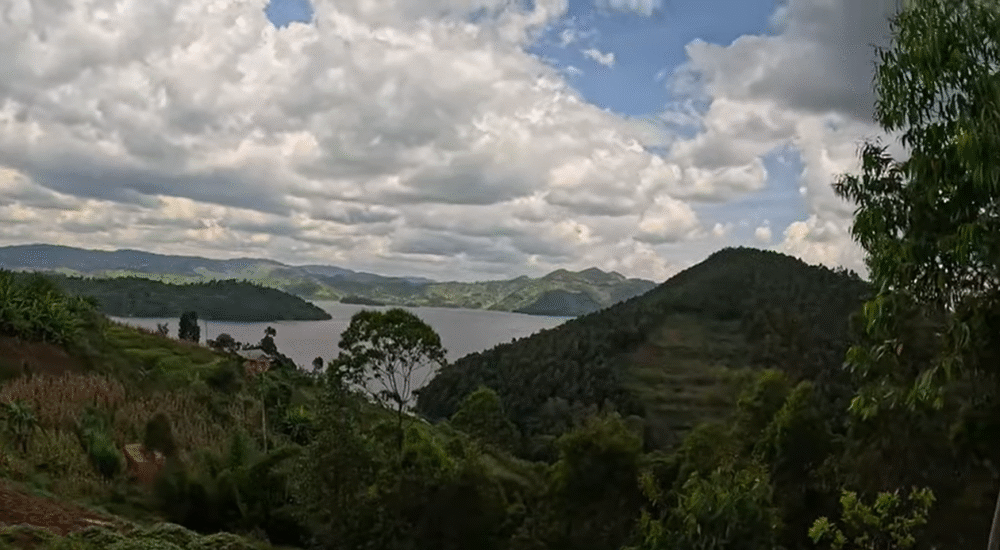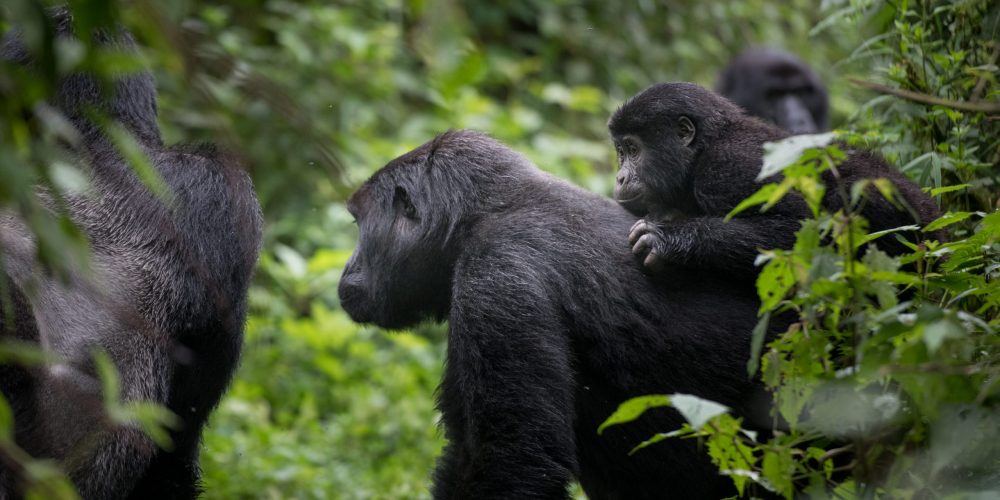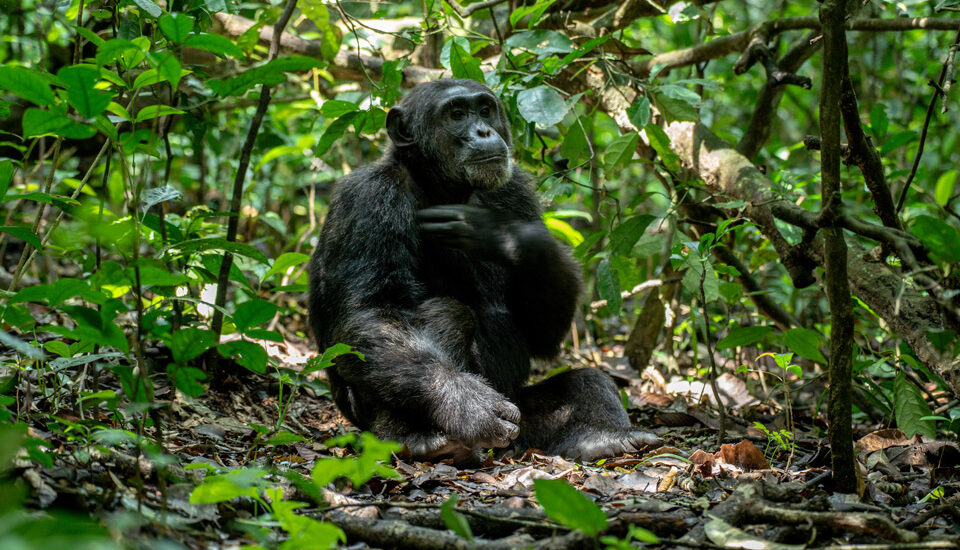Rwanda, known for its stunning landscapes and rich biodiversity, offers many unique travel destinations. One…
The Golden Monkeys
The Golden Monkeys, Two hundred different kinds of monkeys live in the Virungas. The Golden Monkey is one of them. The proper name for this animal is Cercopithecus mitis kandti. When compared to other monkey species, they look absolutely beautiful. They have long, highly colored fur that is mostly gold with orange tips.
The current population estimate is between 2,000 and 4,000 individuals. They are considered threatened because they can only be found in the Virungas, which spans from Northern Rwanda to Eastern Congo and Southwestern Uganda. Their main food is bamboo shoots, seasonal fruits, bamboo leaves, lichens, sprouts, flowers, leaves, and small animals. They live in groups of about 100. Just like mountain gorillas, golden monkeys can only be found in three places: Uganda, Rwanda, and the Democratic Republic of the Congo.
Interesting Things About Golden Monkeys
It’s possible that the phrase “what you see is what you get” comes from this. Or the day of the name wasn’t very creative. The name for these animals comes from the way they look. To the point. They are different from other monkeys in the wild because of the orange patch that runs from their long tail to their back and cheeks.
Their legs, arms, and face also have darker spots that make them stand out. There are good reasons why female golden monkeys are much lighter than males, but this is true for most animal groups. Monkey males are 48 to 67 centimeters long, while females are 46 to 53 centimeters long, making them slightly shorter. Men can weigh between 4.5 kg and 7 kg, and women can weigh between 3.5 kg and 4.5 kg. They’re not big animals like you might think.
Family and reproduction: Like most wild animals, golden monkeys have relationships with more than one partner. The male monkey in the group gets along great with all the females. The fact that females start this pretty advanced mating process is interesting. After five months of pregnancy, the youngling is born with hair and eyes that are wide open.
A mother takes care of her child for about two years before letting it go. After that, it is free to go wherever it wants in the wild, join other monkey groups, and make its own packs. It is still an endangered species, though, since the only wild group that lives outside of the Virungas is in those mountains.
What they eat: Golden monkeys are herbivores, which means they mostly eat plants. The way their bodies are built and how they work make them naturally hungry for plants. They are known to eat 20 to 30 different types of plants and sometimes insects that are found on leaves. No one doesn’t like to snack sometimes. The best thing about them is that they eat bamboo leaves, especially when it rains. When wild fruits are in season, golden monkeys will eat a lot of them before going back to the grass that is always there.
Environmental Habitat: These species only live in one place. If you can only find them in one place, you can say that they are indigenous. They live in places with lots of fruit and bamboo and go climbing when it rains or shines. During the rainy season, bamboo grows, which is great for golden monkeys because they can build their homes near food sources. Some of them move to other areas to find fruits and other plants they can eat during the dry season, when there is less bamboo.
The golden monkey lives in groups of 30 to 80 other monkeys. It is a social animal. As the boss of the group, the male golden monkey can mate with any of the females. The size of these groups changes depending on how high up they live. Most golden monkeys that live at higher elevations live in smaller groups than golden monkeys that live at lower elevations. Girls’ golden monkeys are in charge of keeping their homes and young safe until they reach adulthood.
How long a golden monkey lives: They can live up to 19 years.
The search for golden monkeys in Mgahinga Park
When you go on a primate tour to Mgahinga Gorilla National Park, golden monkey trekking is one of the coolest things you can do. In Mgahinga Gorilla National Park, golden monkey trekking means going on hikes through the bush to see golden monkeys where they live naturally. At 8 a.m., the action starts with a briefing on what to expect. Next, people go on the Gahinga trail to look for the golden monkeys.
Monkeys with GoldIt sounds like the forest is alive when the golden monkeys play and eat by jumping from one bamboo tree to another. Once visitors meet the monkeys, they have an hour to spend with them before they have to go back to where they started. It’s not hard to do, but it can take up to three hours because the monkeys live in lower places. In Mgahinga Gorilla National Park, kids younger than 12 are not allowed to go on golden monkey hunts.
To find golden monkeys in Mgahinga, tourists need to bring the right gear, like sturdy hiking shoes, long-sleeved shirts, rain jackets, bug spray, birdwatching binoculars, snacks to keep them going, and water to drink during the walk. It might also be helpful to have a climbing stick. You can also hire a porter at the start of the hike to help you carry your pack or help you stay upright on slick tracks by pulling or pushing you.
Travelers must first buy golden monkey tracking passes, which only let one person do the activity at a time. People from outside of East Africa pay UGX40,000 per person for the pass, which can only be used once. People from East Africa pay $60. You can buy a permit at the park headquarters in Ntebeko or through a reliable tour company.
Visitors who want to spend more time with the golden monkeys can choose to spend more time with the monkeys in the park. Tourists learn about golden monkeys’ habits and nature with the help of researchers and experts during the habituation experience. It costs $100 for foreign residents and non-residents to have an experience with a gold monkey, but it costs UGX100,000 for East African citizens.


